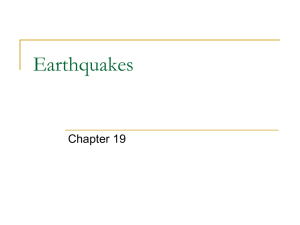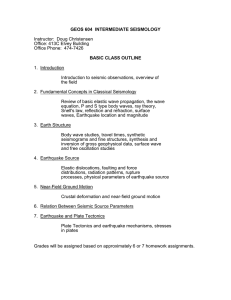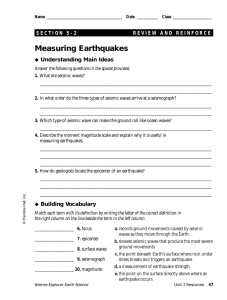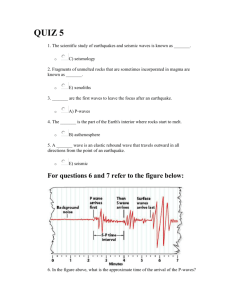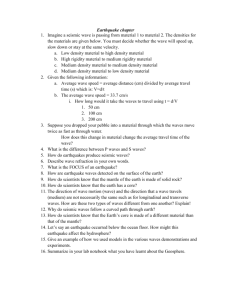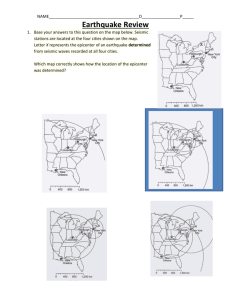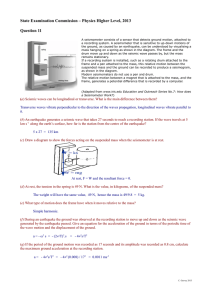Seismology Exercises: Wave Travel, Earthquake Location
advertisement
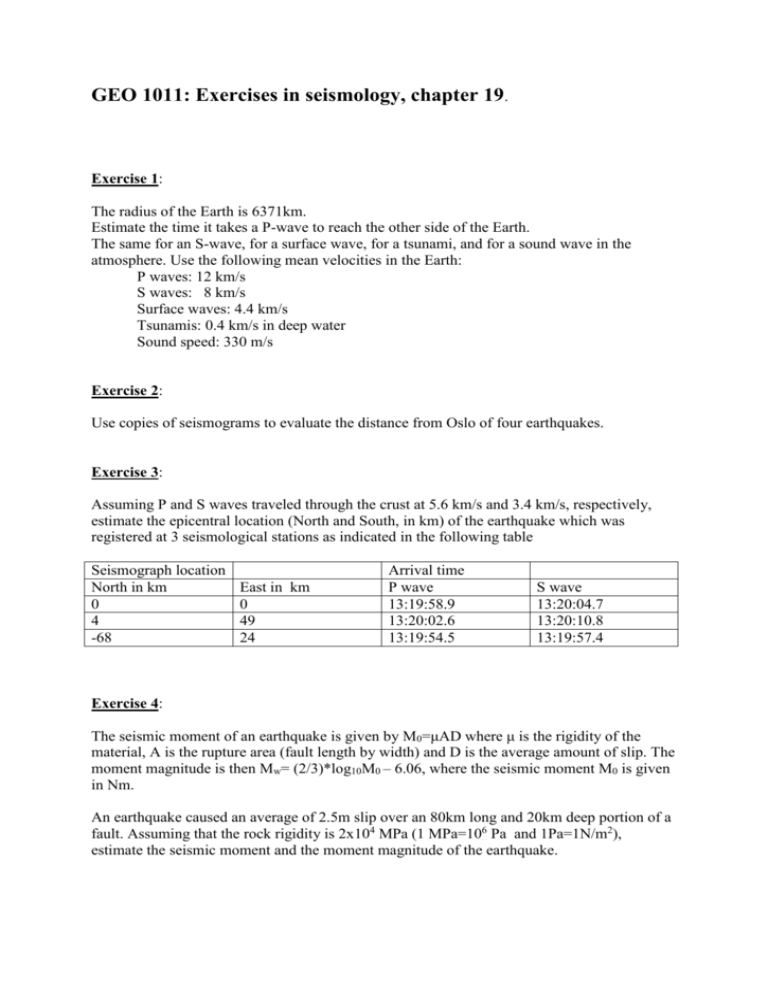
GEO 1011: Exercises in seismology, chapter 19. Exercise 1: The radius of the Earth is 6371km. Estimate the time it takes a P-wave to reach the other side of the Earth. The same for an S-wave, for a surface wave, for a tsunami, and for a sound wave in the atmosphere. Use the following mean velocities in the Earth: P waves: 12 km/s S waves: 8 km/s Surface waves: 4.4 km/s Tsunamis: 0.4 km/s in deep water Sound speed: 330 m/s Exercise 2: Use copies of seismograms to evaluate the distance from Oslo of four earthquakes. Exercise 3: Assuming P and S waves traveled through the crust at 5.6 km/s and 3.4 km/s, respectively, estimate the epicentral location (North and South, in km) of the earthquake which was registered at 3 seismological stations as indicated in the following table Seismograph location North in km 0 4 -68 East in km 0 49 24 Arrival time P wave 13:19:58.9 13:20:02.6 13:19:54.5 S wave 13:20:04.7 13:20:10.8 13:19:57.4 Exercise 4: The seismic moment of an earthquake is given by M0=μAD where μ is the rigidity of the material, A is the rupture area (fault length by width) and D is the average amount of slip. The moment magnitude is then Mw= (2/3)*log10M0 – 6.06, where the seismic moment M0 is given in Nm. An earthquake caused an average of 2.5m slip over an 80km long and 20km deep portion of a fault. Assuming that the rock rigidity is 2x104 MPa (1 MPa=106 Pa and 1Pa=1N/m2), estimate the seismic moment and the moment magnitude of the earthquake.


